In part one of this series, we discuss the creation of one of Thinkwell’s very first projects, Sesame Street Presents: The Body. Now, we’re exploring what it took to take the street on the road and the successes and challenges that came along the way as it toured the nation for a decade. Created in partnership with the Sesame Workshop, The Body was a touring exhibit for science museums that delivered a playful, learning experience for a young audience of emerging readers.
Sesame Street Presents: The Body went from concept to creation in just nine months, with every element designed as separate modules that could ship easily and fit into a variety of spaces at the various museums it would tour. Each of the exhibits had to be made durable enough to withstand the onslaught of the young target audience, of course, but the pieces were also built to maximize the efficiency of set up, strike, and transportation to the next venue.
In spite of the careful planning, testing, and adjusting, life on tour was always full of unexpected surprises, but the nimble road team of Thinkwellians Jen Miller, Courtney Kleinman, Gene Rogers, and Amy Raymond (among others) were up to the task, facing each new challenge with ingenuity and humor, and making sure Sesame Street Presents: The Body would arrive safely at its next destination.
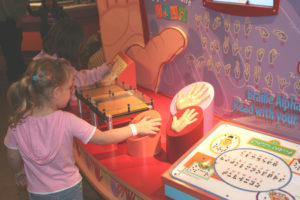 Each venue on the tour had its own unique quirks, and loading in and out of each often posed a new challenge. In many cases, the team’s quick thinking resulted in simple modifications and workarounds that made the subsequent moves more efficient. Amy Raymond joined the road team early in the run, replacing the original Technical Director Gene Rogers. During Amy’s initial training, Gene pointed to a tiny hatch on one kiosk. “One of us has to climb in there to plug in the lighting, way back there…” Rogers said to Amy. “Have fun!” After a few minutes squeezed inside the kiosk, Amy got the lights working. Once she managed to back her way out of the box, she devised a more practical way to make the connection… from the outside, a solution she put into action at the very next stop.
Each venue on the tour had its own unique quirks, and loading in and out of each often posed a new challenge. In many cases, the team’s quick thinking resulted in simple modifications and workarounds that made the subsequent moves more efficient. Amy Raymond joined the road team early in the run, replacing the original Technical Director Gene Rogers. During Amy’s initial training, Gene pointed to a tiny hatch on one kiosk. “One of us has to climb in there to plug in the lighting, way back there…” Rogers said to Amy. “Have fun!” After a few minutes squeezed inside the kiosk, Amy got the lights working. Once she managed to back her way out of the box, she devised a more practical way to make the connection… from the outside, a solution she put into action at the very next stop.
All of the museums the exhibition toured provided some support staff during load-in, but their skill set wasn’t always predictable. At some venues the crew was part of the museum staff, at others they were local high school students volunteering for service credits, and in still others, they were parolees on work release programs.
In Seattle, Amy heard the overeager crew counting down to three and turned just in time to see them all shove the comparatively tall “Your Legs and Feet” unit through a set of double doors… and right through the gallery’s drop ceiling. “In hindsight, not a great way to go,” the crew lead told her. Still, after that incident, Amy modified the kiosk so that it could break down into two parts, making it far easier to move, thus preventing any similar occurrences in the future. Thankfully, the Museum Director was enormously understanding of the gouge in the ceiling. “It’s not world peace,” she said to Raymond, a phrase she has since adopted as her own.
At the Museum of Science in Buffalo, New York, the old freight elevator was slightly too small to accommodate the signature Sesame Street “123” building facade. The on-site Technical Director, Tom Fortado (who was also a skilled finish carpenter,) insisted that he could disassemble the facade and then rebuild it in the final location with no lingering damage. This iconic element functioned as the main entrance to the exhibit and Amy and Project Manager Jen Miller knew that leaving it on the truck was not an option, so they reluctantly agreed. The facade, with its heavy corbels and moulding, was also a particularly top-heavy and difficult piece to set up, but as Fortado reassembled the facade, he made those elements detachable by adding new hardware. Not only did it fit into the elevator and onto the show floor, it was also far easier to strike, move, and set up for the rest of the tour.
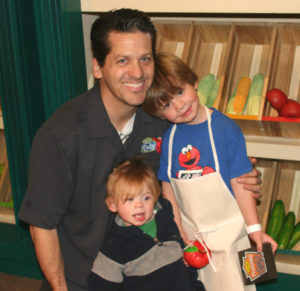
Meanwhile, in Calgary, Amy received a call that young visitors had pried open the cases and made off with some of the props. The Hooper’s Store exhibit featured a display filled with realistic faux “sometimes” foods: pastries, cakes, cookies, and doughnuts. “Canada consumes more doughnuts than any other country in the world,” Amy Raymond explained, and while the pastry pilfering occurred more than once during the tour, it was only the doughnuts that went missing, and only at stops in Canada. Whether they were consumed or simply kept as souvenirs still remains a mystery.
Canada had another surprise for Amy as the tour was making its way back to the US for its next stop. She was awakened in the middle of the night by a call from a Homeland Security official at the border. “Can you explain to me what ‘The Brain’ is?” the officer asked. “It’s giving off a fairly high level of radioactivity.” The Brain exhibit had been created with midcentury surplus military and aerospace switches from a salvage yard in Los Angeles — switches that, unbeknownst to the design team at the time, contained traces of radioactive radium. Eventually, the TSA team wrapped the device in caution tape and allowed it across the border for its final stop on the tour before it was pulled from future shows.
Over the years, the team braved rain and snow and dark of night, ever vigilant in their task of bringing Sesame Street to a new and eager audience. A snowfall in Buffalo was so severe that the high school student volunteers had to return home. In Omaha, tornadoes forced the team to shelter in place in the museum hall. In Columbus, Hurricane Ike shut the venue (and, in fact, the whole city) down for days.
Still, nature cannot match the destructive force of a five-year-old child. The team witnessed one young guest methodically tipping the “Use Your Head” exhibit back and forth until it finally pulled free of its base. Another spun a military-grade, steel submarine valve wheel in Oscar’s Digestion exhibit so hard that it too broke free, while another lever snapped off so often that it was ultimately replaced with an industrial-grade button. At the Bishop Museum in Honolulu, the specially-invited preview audience numbered in the thousands, and the sight of the chaotic crowd of delighted learners converging on the exhibit drove Gene straight out of the venue. “They were having fun, I just couldn’t watch the destruction!” he said.
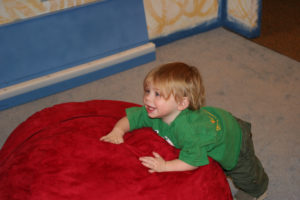
Not every unexpected surprise was unpleasant, however. It was assumed, for example, that Hooper’s store and its color-coded produce section would require a lot of end-of-day clean-up, but more often than not, the young make-believe shopkeepers neatly sorted all of the fruits and vegetables as part of their pretend play. Nearby, Elmo’s World included cozy bean bag chairs where kids could rest and recharge, but they became popular spots for caregivers as well, who would often sit with their child, reading stories and relaxing together. Most delightful of all was that older siblings, who might have regarded Sesame Street as “too young” for them, explored the exhibits with the same joyful abandon as the younger target audience.
The Clay Center’s Avampato Discovery Museum in Charleston, West Virginia, was a surprise all its own. “I have never seen a scrappier, more nimble institution,” Cynthia Sharpe said. “They went above and beyond to raise funds, working with Federal agencies, the local PBS station, and Sesame Workshop to bring the exhibit to their venue. Their sponsors were so numerous, their marketing materials looked like a Nascar team.” Their tenacity and creativity have remained a benchmark for how smaller market facilities can succeed.
Ultimately, the five-year run continued for twice as long, and came to an end after ten years on the road, having reached over two million visitors. Amy Raymond was so intrigued by watching visitors learn through play, in fact, that she went on to earn her Masters in Arts and Education at Harvard.
Sesame Street Presents: The Body gave emerging readers a chance to learn all about themselves, but it also provided an invaluable education to every member of Thinkwell’s project team. The exhibit not only brought families together through playful collaboration, it also forged familial bonds between the project team, connected Thinkwell with the broader museum community, established new friendships, and initiated collaborative client relationships that continue to this day.
Come and play! Everything’s a-okay!
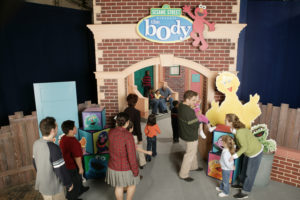
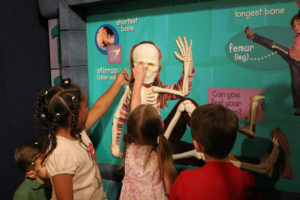
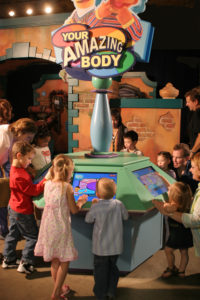
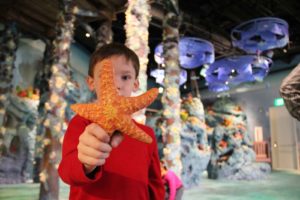
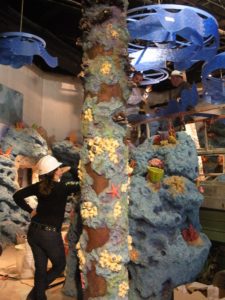 To start with, the logistics of creating a bespoke, aspirational, indoor forest on the third floor of the building were daunting. Fernbank’s main loading dock was located four floors below, on the opposite side of the building, impractically far away from the space. Thinkwell proposed a radical solution, punching a new hole in the building three stories above an adjacent service area, and the Fernbank team unflinchingly approved the plan. It proved to be an invaluable decision, minimizing the impact of construction on the rest of the museum.
To start with, the logistics of creating a bespoke, aspirational, indoor forest on the third floor of the building were daunting. Fernbank’s main loading dock was located four floors below, on the opposite side of the building, impractically far away from the space. Thinkwell proposed a radical solution, punching a new hole in the building three stories above an adjacent service area, and the Fernbank team unflinchingly approved the plan. It proved to be an invaluable decision, minimizing the impact of construction on the rest of the museum.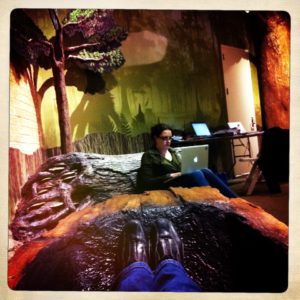
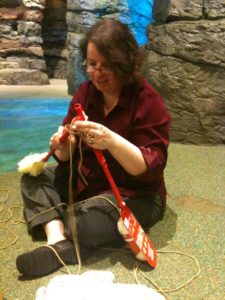
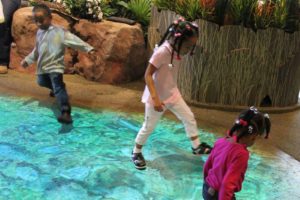
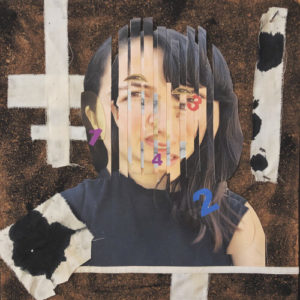
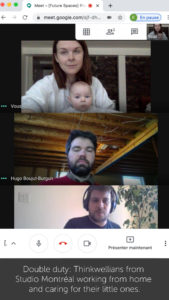
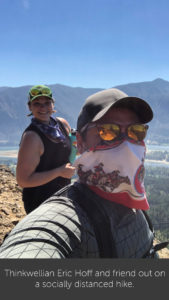 When we shift the topic of our lockdown experiences away from work-related things, however, the conversation takes a revealing turn. When asked what happy surprises our suddenly homebound existences have revealed after these many months, our answers are notably intimate and personal. Many of us take great satisfaction in finally checking off items on our much ignored to do lists, ignored not so much because we’ve been busy, but because we had so many ready distractions to blame for our procrastination. My colleagues have fixed that leaky faucet, renovated a room, completed unfinished writing projects, honed new skills, created the artwork, crafted instruments, miniatures, sweaters, scarves, and quilts. Others have tended their gardens, harvested their crops, and prepared their meals… and spent time with each other.
When we shift the topic of our lockdown experiences away from work-related things, however, the conversation takes a revealing turn. When asked what happy surprises our suddenly homebound existences have revealed after these many months, our answers are notably intimate and personal. Many of us take great satisfaction in finally checking off items on our much ignored to do lists, ignored not so much because we’ve been busy, but because we had so many ready distractions to blame for our procrastination. My colleagues have fixed that leaky faucet, renovated a room, completed unfinished writing projects, honed new skills, created the artwork, crafted instruments, miniatures, sweaters, scarves, and quilts. Others have tended their gardens, harvested their crops, and prepared their meals… and spent time with each other. 